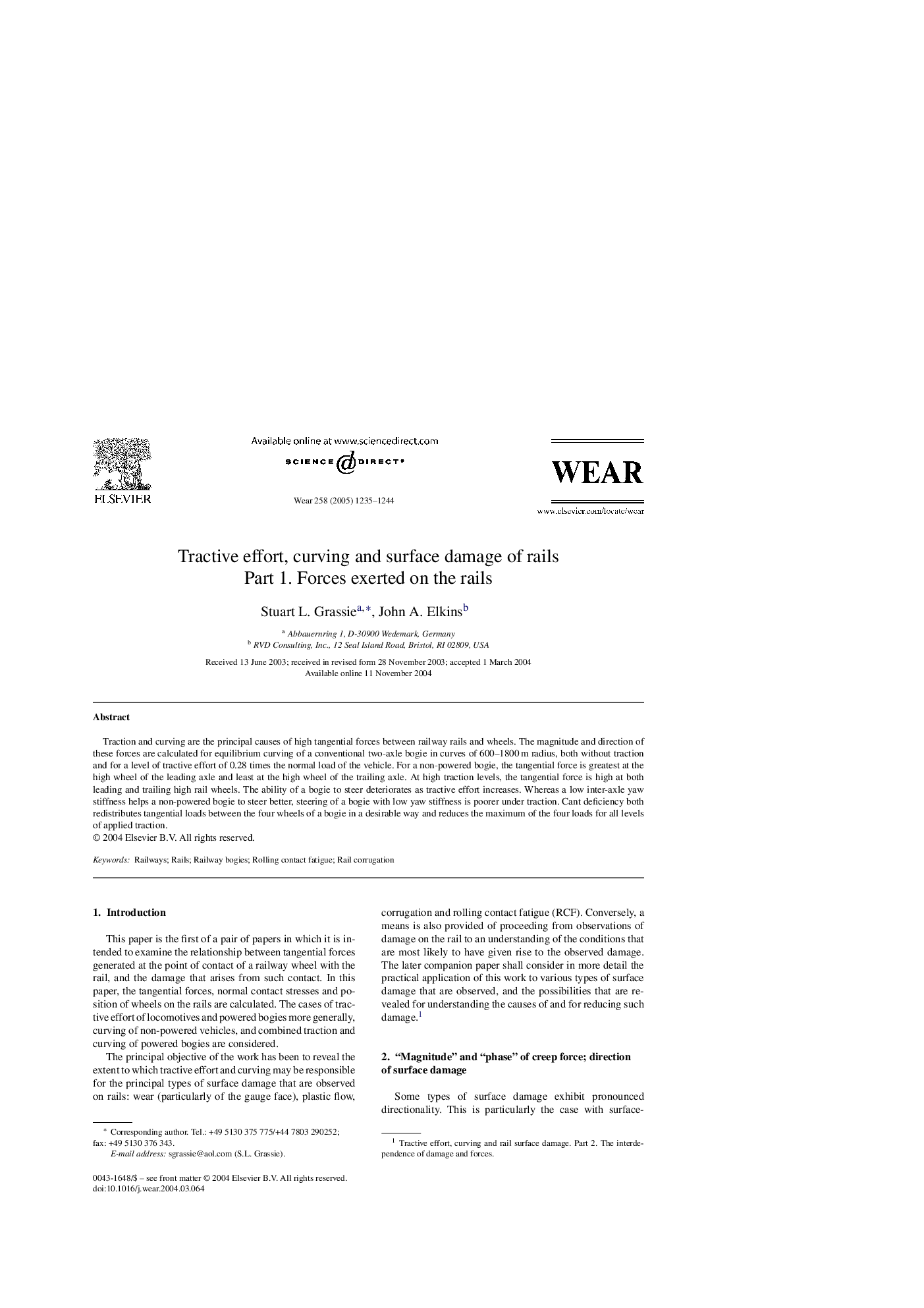| Article ID | Journal | Published Year | Pages | File Type |
|---|---|---|---|---|
| 9679545 | Wear | 2005 | 10 Pages |
Abstract
Traction and curving are the principal causes of high tangential forces between railway rails and wheels. The magnitude and direction of these forces are calculated for equilibrium curving of a conventional two-axle bogie in curves of 600-1800Â m radius, both without traction and for a level of tractive effort of 0.28 times the normal load of the vehicle. For a non-powered bogie, the tangential force is greatest at the high wheel of the leading axle and least at the high wheel of the trailing axle. At high traction levels, the tangential force is high at both leading and trailing high rail wheels. The ability of a bogie to steer deteriorates as tractive effort increases. Whereas a low inter-axle yaw stiffness helps a non-powered bogie to steer better, steering of a bogie with low yaw stiffness is poorer under traction. Cant deficiency both redistributes tangential loads between the four wheels of a bogie in a desirable way and reduces the maximum of the four loads for all levels of applied traction.
Related Topics
Physical Sciences and Engineering
Chemical Engineering
Colloid and Surface Chemistry
Authors
Stuart L. Grassie, John A. Elkins,
